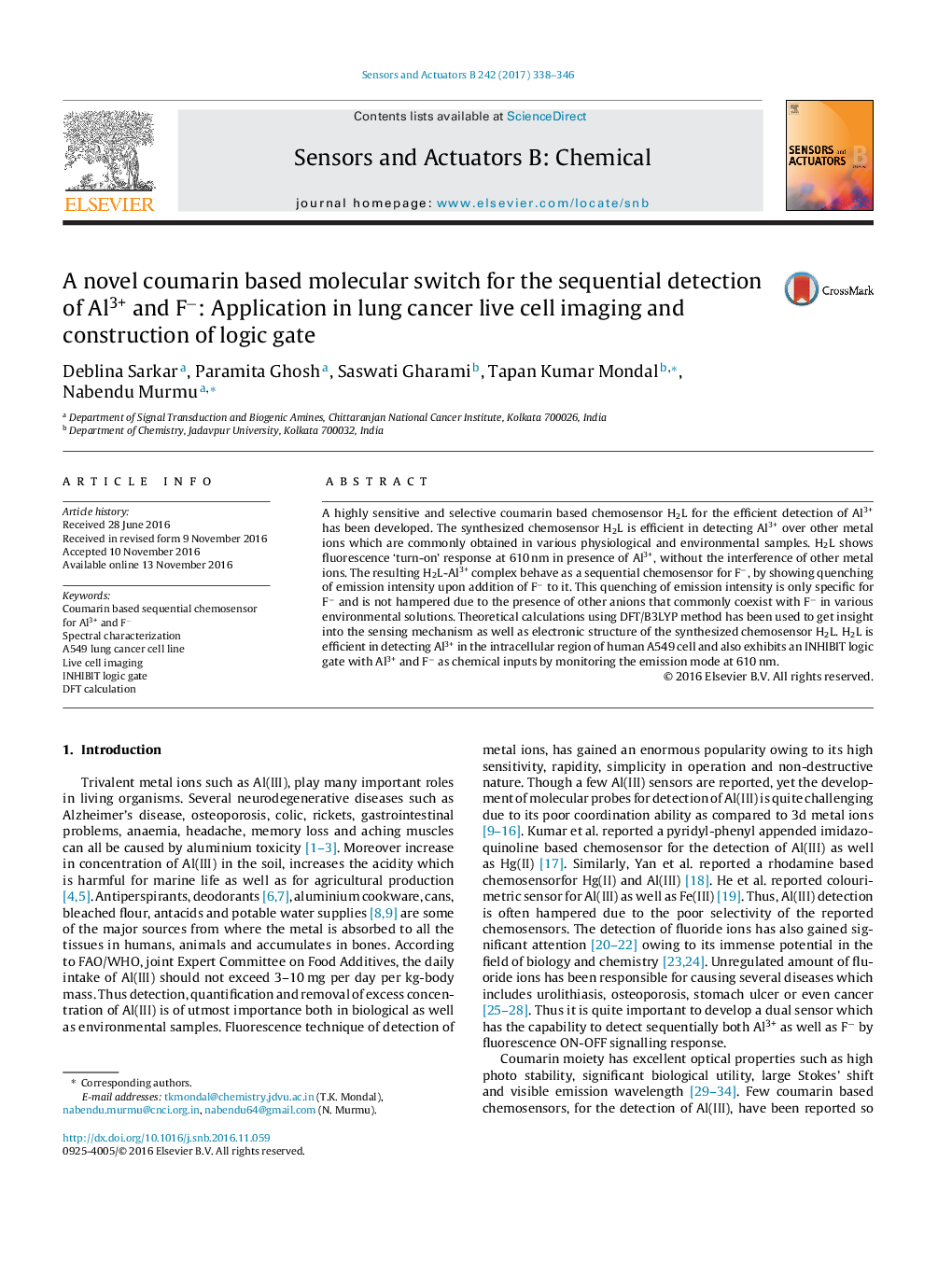| Article ID | Journal | Published Year | Pages | File Type |
|---|---|---|---|---|
| 5009689 | Sensors and Actuators B: Chemical | 2017 | 9 Pages |
â¢Development of novel coumarin based molecular switch for sequential detection of Al3+ and Fâ.â¢UV-Vis and emission spectral changes confirms the sensing property of the developed chemosensor H2L.â¢DFT used to get insight into the sensing mechanism and electronic structure of the chemosensor H2L.â¢H2L is efficient in detecting Al3+ in the intracellular region of human lung cancer cell line A549.â¢Exhibits an INHIBIT logic gate with Al3+ and Fâ as chemical inputs by monitoring the emission mode at 610 nm.
A highly sensitive and selective coumarin based chemosensor H2L for the efficient detection of Al3+ has been developed. The synthesized chemosensor H2L is efficient in detecting Al3+ over other metal ions which are commonly obtained in various physiological and environmental samples. H2L shows fluorescence 'turn-on' response at 610Â nm in presence of Al3+, without the interference of other metal ions. The resulting H2L-Al3+ complex behave as a sequential chemosensor for Fâ, by showing quenching of emission intensity upon addition of Fâ to it. This quenching of emission intensity is only specific for Fâ and is not hampered due to the presence of other anions that commonly coexist with Fâ in various environmental solutions. Theoretical calculations using DFT/B3LYP method has been used to get insight into the sensing mechanism as well as electronic structure of the synthesized chemosensor H2L. H2L is efficient in detecting Al3+ in the intracellular region of human A549 cell and also exhibits an INHIBIT logic gate with Al3+ and Fâ as chemical inputs by monitoring the emission mode at 610Â nm.
Graphical abstractDownload high-res image (158KB)Download full-size image
